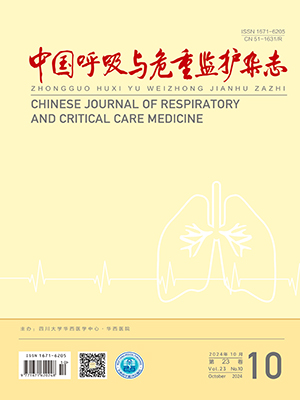Objective To investigate the transduction pathway of TREM-1 during endotoxininduced acute lung injury ( ALI) in mice through the specific activating or blocking TREM-1.
Methods 40 mice were randomly divided into a saline control group, an ALI group, an antibody group, and a LP17 group ( 3.5 mg/kg) . All mice except the control group were intraperitoneally injected with lipopolysaccharide ( LPS) to establish mouse model of ALI. Two hours after LPS injection, anti-TREM-1mAb ( 250 μg/kg) was intraperitoneally injected in the antibody group to activation TREM-1, and synthetic peptide LP17 was injected via tail vein in the LP17 group to blocking TREM-1. After 6,12,24, 48 hours, 3 mice in each group were sacrificed for sampling. The expression of NF-κB in lung tissue was determined by immunohistochemistry. The levels of TNF-α, IL-10, TREM-1, and soluble TREM-1 ( sTREM-1) in lung tissue and serumwere measured by ELISA. Pathology changes of lung were observed under light microscope, and Smith’s score of pathology was compared.
Results Administration of anti-TREM-1mAb after ALI modeling significantly increased the NF-κB expression in lung tissue at 48h, resulting in a large number of pro-inflammatory cytokines releasing in the lung tissue and serumand lung pathology Smith score increasing. Administration of LP17 after modeling significantly down-regulated the expressions of NF-κB and pro-inflammatory cytokines, while led to a slight increase of anti-inflammatory cytokines and a decline of lung pathology Smith’s score.
Conclusion TREM-1 may involve in inflammatory response by promoting the generation of inflammatory factors via NF-κB pathway, thus lead to lung pathological changes in ALI.
Citation: YU Zhuxi,GU Qin,LIU Ning. The Signal Transduction Pathway of TREM-1 on Endotoxin-Induced Acute Lung Injury in Mice. Chinese Journal of Respiratory and Critical Care Medicine, 2013, 12(1): 55-60. doi: 10.7507 /1671 -6205.20130013 Copy




